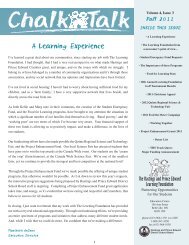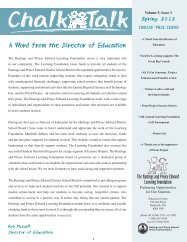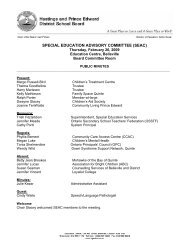Grade 11 Healthy Active Living Education Additional Supports ...
Grade 11 Healthy Active Living Education Additional Supports ...
Grade 11 Healthy Active Living Education Additional Supports ...
Create successful ePaper yourself
Turn your PDF publications into a flip-book with our unique Google optimized e-Paper software.
Violence and Risk Taking Behaviour<br />
Public Profile<br />
Unit #3 Activity #5<br />
Teaching Learning Strategy #4<br />
Catholic Profile<br />
Unit #2 Activity #3<br />
Teaching Learning Strategy N/A<br />
Teacher Resource (Background Information for Student Assignment)<br />
The following provides the teacher with some background information related to<br />
characteristics of violent relationships vs. non-violent relationships.<br />
Power and Control<br />
The following outlines characteristics of a relationship based on power and control. The<br />
concepts addressed in this chart are key to understanding what happens in abusive<br />
relationships, thereby providing students with the insight on what to avoid.<br />
Violent (Physical and Sexual) Relationships Based on Power and Control<br />
Using Coercion and<br />
Threats.<br />
• making and/or carrying out threats to do something to hurt<br />
partner<br />
• threatening to leave partner, to commit suicide, to report<br />
him/her to welfare<br />
• making partner drop charges<br />
• making partner do illegal drugs<br />
Using Intimidation • making partner afraid by using looks, actions, gestures<br />
• smashing things<br />
• destroying partnerÕs property<br />
• abusing pets<br />
• displaying weapons<br />
Using Emotional Abuse • putting partner down<br />
• making partner fee bad about him/herself<br />
• calling partner names<br />
• making partner think he/she is crazy<br />
• playing mind games<br />
• humiliating partner<br />
• making partner feel guilty<br />
Using Isolation • controlling what partner does, who he/she sees and talks to,<br />
what he/she reads, where he/she goes<br />
• limiting partnerÕs outside involvement<br />
Minimizing, Denying and<br />
Blaming<br />
• using jealousy to justify actions<br />
• making light of the abuse and not taking partnerÕs concerns<br />
about it seriously<br />
• saying the abuse did not happen<br />
• shifting responsibility for abusive behaviour<br />
• saying partner caused it<br />
<strong>Grade</strong> <strong>11</strong> <strong>Healthy</strong> <strong>Active</strong> <strong>Living</strong> <strong>Education</strong> (PPL30), Module #3 Violence and Risk Taking Behaviour<br />
Page 32
















